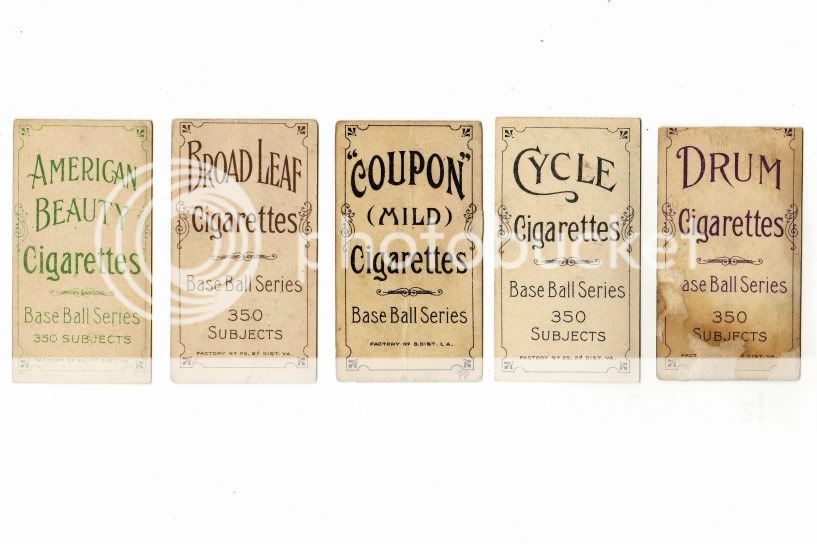|
|
|||||||
|
|
Thread Tools | Display Modes |
|
#1
|
|||
|
|||
    The complexity of the various series in the T206 set makes it difficult to form an accurate arrangement of how a given sheet was printed. The 350 series press run of the Southern Leaguer's (SL) suggests that a 48-card sheet was printed. Or perhaps a 96-card sheet of them was printed, if all 48 - SL subjects were Double-Printed (as the "same-name" miscut SL cards indicate). Furthermore, Jantz's excellent thread....One T206, Two Names....shows us that the placement of images on a T206 sheet varied from one press run to another. Therefore, trying to formulate a sheet arrangement from this data can be very puzzling. The closest predictable example that I've found in formulating a possible sheet is the group of Major League subjects in the 1910 COUPON set. It comprises of 48 subjects from the 350-only series (at the time of printing....circa Spring/Summer 1910). I choose this example because 45 ** (of these 48) subjects were printed with the pattern that I refer to as the "QUINTUPLICATE" stylistic back design (see my 2008 Net54 thread).  Furthermore, 39 of these subjects are POLAR BEAR no-prints. This fact provides us a window into a timeline when this group of cards were printed. And, when the POLAR BEAR press runs occurred regarding the cards in the 350-only series. The 9 subjects in this group printed with the POLAR BEAR back are Engle, LaPorte, Willett, and the six Super-Prints. ** Note Byrne and Mowery were in transitional trades at the time of this printing; and, Rossman's career ended. Therefore, these 3 subjects were not printed with the AMERICAN BEAUTY....BROAD LEAF....CYCLE....DRUM backs. Any meaningful discussions are welcomed. TED Z Last edited by tedzan; 02-10-2014 at 01:23 PM. |
|
|
 Similar Threads
Similar Threads
|
||||
| Thread | Thread Starter | Forum | Replies | Last Post |
| W565 Black Sheet w/ Harry Heilman, nrmt Al Simmons plus partial red sheet -$110 DLVD | kylebicking | Pre-WWII cards (E, D, M, etc..) B/S/T | 1 | 01-14-2013 10:13 PM |
| FS: Large Uncut Sheet lot (w/ 1984 Fleer Update sheet) - $800/OBO | jimivintage | 1950 to 1959 Baseball cards- B/S/T | 0 | 04-21-2011 10:58 PM |
| F/S T206's....Baker P460/42 (SOLD)....check-out 8 add. T206's | Archive | Tobacco (T) cards, except T206 B/S/T | 5 | 03-30-2009 02:46 PM |
| Check-out this T206 lot ? ? | Archive | Net54baseball Vintage (WWII & Older) Baseball Cards & New Member Introductions | 7 | 06-23-2007 10:56 AM |
| 24 Player Old Judge Sheet on ebay - check this out!!! | Archive | Net54baseball Vintage (WWII & Older) Baseball Cards & New Member Introductions | 7 | 06-26-2003 11:18 AM |